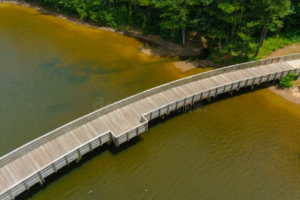Beyond Memorization: A Lesson from a Blank Map and Bloom’s Taxonomy
I was born and raised in Suriname, a South American country with not only a vibrant blend of cultures, but also a rigorous educational system. One of my most vivid memories from sixth grade was the national graduation exam. This was no multiple-choice test. Instead, it required students to demonstrate deep knowledge and understanding across subjects like math, science, history, and geography.
For geography, I was handed a blank map. Just a blank outline of a continent. My assignment? Identify all the countries, their capitals, major rivers and tributaries, mountain ranges, lakes, deserts, and other geographical features. And because the continent was assigned randomly, you had to be prepared for any of them. Could be Africa, Asia, Europe, North America, South America, or Australia.
I received South America and went on to fill in all 12 independent countries and one territory. I identified the Amazon River and its tributaries, the Rio Negro and the Orinoco, the Andes mountain range, Lake Titicaca, the Atacama Desert, and even Aconcagua, the continent’s highest peak.
But the test didn’t end there.
After I completed the written portion, I had to stand before a panel of teachers and explain my work. I had to defend my reasoning, demonstrate how I connected information, and justify the placement of features on the map. There was no hiding behind memorized facts. This was about comprehension, application, and articulation.

Connecting the Dots: Bloom’s Taxonomy in Real Time
Looking back, that experience was my first practical encounter with Bloom’s Taxonomy, even if I didn’t know the term at the time. Bloom’s Taxonomy is a framework used to classify educational goals into levels of complexity and mastery, often represented as a pyramid:
- Remembering – recalling facts and basic concepts
- Understanding – explaining ideas or concepts
- Applying – using information in new situations
- Analyzing – drawing connections among ideas
- Evaluating – justifying a decision or course of action
- Creating – producing new or original work
My geography exam pushed me up that pyramid. I had to remember the names of places, understand their relationships, apply that knowledge to a blank map, analyze the placement of natural features, evaluate my decisions, and finally present my thinking in a coherent, persuasive manner.
The Problem with “Choose One of the Following”
Contrast that with many classrooms in the U.S. today, where students are too often trained to pass standardized tests by mastering the art of choosing the best answer from four choices. This habit reinforces learning at the lowest level, remembering, and rarely challenges students to understand or apply knowledge in a meaningful way.
This isn’t just about standardized testing; it’s about what kind of learners and ultimately, what kind of thinkers, we are producing. A system overly focused on memorization creates students who rely on short-term recall rather than cultivating deep understanding. It fails to ignite curiosity and doesn’t encourage students to direct their own learning journeys.
From Understanding to Mastery to Self-Direction
Understanding is a critical pivot point. It is the gateway to higher-order thinking and the foundation for self-directed learning. When students understand, they begin to feel confident in their ability to learn. This increases self-efficacy, the belief in one’s capacity to succeed. With self-efficacy comes a thirst for more learning, not because it’s required, but because it’s fulfilling.
Our educational systems must recognize that real mastery doesn’t stop at memorization—it starts there. By helping students move swiftly from remembering to understanding, we equip them to:
- Explore knowledge independently
- Connect ideas across disciplines
- Solve complex, real-world problems
- Create new knowledge rather than just consume it
The Blank Map as a Metaphor
That blank map from my sixth-grade exam is a perfect metaphor. Every student begins with a blank map of the world, of knowledge, of their own potential. If we only ask them to memorize labels, we’re missing the point. But if we teach them how to make meaning of the terrain, how to explore it with curiosity and confidence, we help them become lifelong learners and scholars who can analyze, evaluate, and create.
Let’s start filling in the map—not just with names, but with understanding, purpose, and the skills to navigate an ever-changing world.
